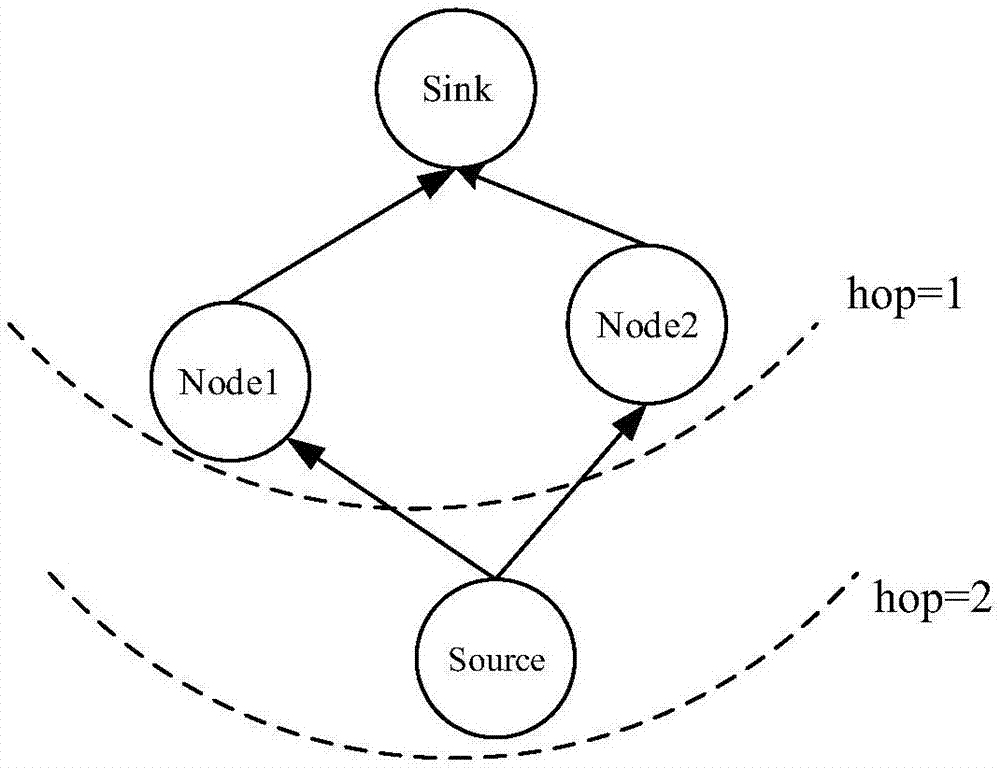Data collection method based on constructive interference in asynchronous WSN with low duty ratio
A constructive interference and low duty cycle technology, applied in the direction of data exchange network, digital transmission system, transmission system, etc., can solve the problems of large energy consumption and complicated maintenance process, so as to reduce energy consumption, reduce control overhead, The effect of reducing network energy consumption
- Summary
- Abstract
- Description
- Claims
- Application Information
AI Technical Summary
Problems solved by technology
Method used
Image
Examples
Embodiment Construction
[0035] In order to make the object, technical solution and advantages of the present invention clearer, the present invention will be described in further detail below with reference to the accompanying drawings and preferred embodiments. However, it should be noted that many of the details listed in the specification are only for readers to have a thorough understanding of one or more aspects of the present invention, and these aspects of the present invention can be implemented even without these specific details.
[0036] Such as figure 1 As shown, the data collection method based on constructive interference in an asynchronous low duty cycle WSN according to the present invention includes the following steps: randomly distributing n sensor network nodes in an area with an area of M×M square meters, where , n is an integer greater than 1. The sensor nodes include at least a Source node, a forwarding node, and a Sink node. Except for the Sink node, other sensor nodes in th...
PUM
 Login to View More
Login to View More Abstract
Description
Claims
Application Information
 Login to View More
Login to View More - R&D Engineer
- R&D Manager
- IP Professional
- Industry Leading Data Capabilities
- Powerful AI technology
- Patent DNA Extraction
Browse by: Latest US Patents, China's latest patents, Technical Efficacy Thesaurus, Application Domain, Technology Topic, Popular Technical Reports.
© 2024 PatSnap. All rights reserved.Legal|Privacy policy|Modern Slavery Act Transparency Statement|Sitemap|About US| Contact US: help@patsnap.com










